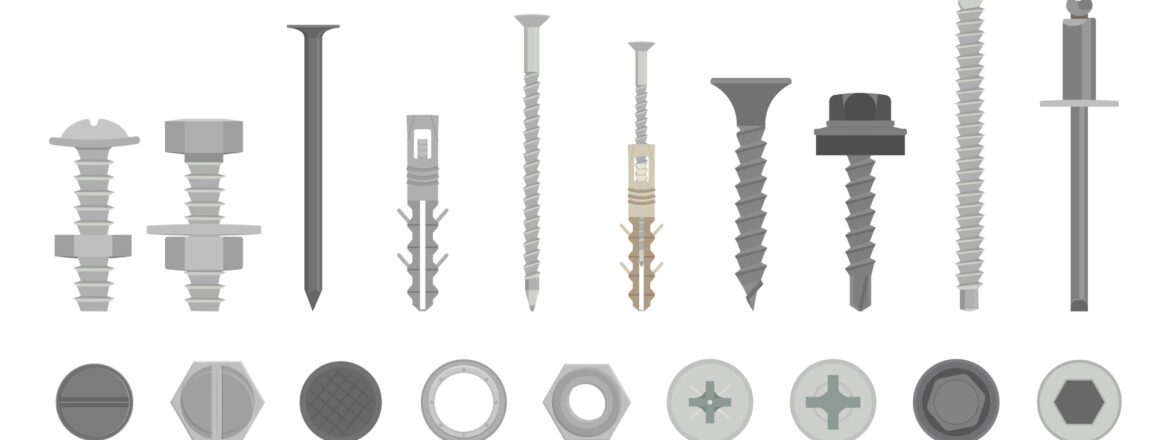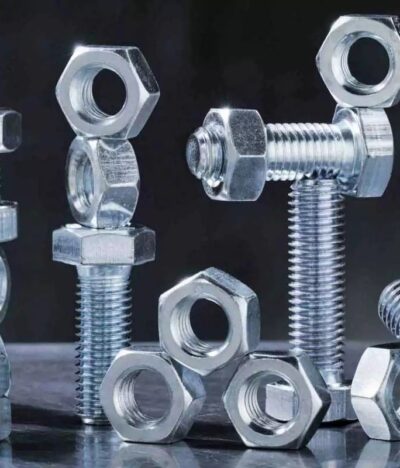"Secure Your Shelter: Uncovering the Secrets of Roofing Screws!"
Secure Your Shelter: Uncovering the Secrets of Roofing Screws! Roofing screws are an important element of any roofing system, but many homeowners don’t know what they are or how to use them. This blog will uncover the secrets of roofing screws, including the types available, installation techniques, and maintenance tips. Find out how to keep your roof secure and your home safe with the help of this informative blog!
1. Introduction to Roofing Screws
Are you planning to build or repair your roof? Then you need to know about roofing screws! These specialized screws are designed to secure roofing materials to the roof deck, providing a strong and durable hold that can withstand harsh weather conditions. But not all roofing screws are created equal. There are different types of roofing screws available, each with its own unique features and benefits. For instance, some roofing screws are coated with a special material that makes them resistant to rust and corrosion, while others are designed to be self-tapping, making installation quick and easy. Additionally, some roofing screws are longer than others, allowing them to penetrate deeper into the roof deck for added stability. By understanding the different types of roofing screws available, you can choose the right one for your specific roofing needs and ensure that your roof is secure and stable for years to come. So, don’t overlook the importance of roofing screws when it comes to protecting your shelter.
- Types of Roofing Screws
When it comes to securing your shelter, roofing screws are an essential component. But not all screws are created equal, and choosing the right type of roofing screw can make all the difference in the longevity and stability of your roof. There are several types of roofing screws available, each with their own unique features and benefits. Self-tapping screws are a popular choice, as they can drill their own hole and create a secure hold without the need for pre-drilling. Another option is the pancake head screw, which has a low profile and is ideal for metal roofing applications. For those looking for a more aesthetically pleasing option, painted screws can blend seamlessly with your roof color. It’s important to consider factors such as the material of your roof, the weather conditions in your area, and the intended use of your roof when selecting the appropriate roofing screw. By choosing the right type of screw, you can ensure that your roof will remain secure and stable for years to come.
- Benefits of Using Roofing Screws
Roofing screws are an essential component of any roofing project. They offer numerous benefits that make them the go-to fastener for securing roofing materials. One of the primary benefits of using roofing screws is their superior holding power. Unlike nails, which can loosen over time due to weather conditions, roofing screws maintain a tight grip, ensuring that your roof remains secure and stable. Additionally, roofing screws are resistant to corrosion, meaning that they won’t rust or deteriorate over time. This is particularly important in areas with high humidity or saltwater exposure, where traditional fasteners may fail. Another benefit of roofing screws is their ease of installation. They can be quickly and easily installed using a power drill, saving time and effort compared to traditional nails. Overall, the benefits of using roofing screws are clear. They offer superior holding power, corrosion resistance, and ease of installation, making them the ideal choice for any roofing project. So, if you’re looking to secure your shelter and protect your home from the elements, consider using roofing screws for your next roofing project.
- Common Mistakes to Avoid When Installing Roofing Screws
When it comes to installing roofing screws, there are several common mistakes that you should avoid at all costs. One of the most significant mistakes is using the wrong type of screw for your roofing material. Different roofing materials require different types of screws, and using the wrong type can lead to leaks and other issues. Another common mistake is overdriving the screws, which can cause damage to your roofing material and reduce the effectiveness of the screws. It’s also important to make sure that you’re using the right length of screw for your roofing material. Using screws that are too long or too short can cause problems down the line. Finally, make sure that you’re installing the screws in the right location. Screws should be placed in the valleys of your roofing material, where they can provide the most support. By avoiding these common mistakes, you can ensure that your roofing screws are installed correctly and provide the protection that your home or business needs.
- How to Choose the Right Roofing Screw for Your Project
When it comes to securing your shelter, choosing the right roofing screw is crucial. The wrong screw can lead to leaks, damage, and even collapse. So how do you choose the right one? First, consider the material of your roof. Different materials require different types of screws, such as self-tapping screws for metal roofs or wood screws for wooden roofs. Next, think about the length and diameter of the screw. A screw that is too short or too thin may not provide enough support, while one that is too long or too thick could damage your roof. It’s also important to choose a screw with the right coating for your environment. A zinc coating may be sufficient for mild climates, but a stainless steel coating is necessary for areas with high humidity or saltwater exposure. Finally, don’t forget to consider the head type and drive style of the screw. A hex head may be easier to install with a drill, while a Phillips head may be more secure. By taking these factors into account, you can choose the right roofing screw for your project and ensure the safety and longevity of your shelter.
- Tools Needed for Installing Roofing Screws
When it comes to installing roofing screws, having the right tools is crucial. One of the most important tools you’ll need is a drill with a screwdriver bit. This will allow you to easily drive the screws into the roofing material without having to manually turn them. You’ll also need a ladder or scaffolding to safely access the roof, as well as a measuring tape to ensure that the screws are spaced evenly. Additionally, it’s important to use the correct type of roofing screws for your specific project, as different materials may require different screws. For example, if you’re working with metal roofing, you’ll need screws with a neoprene washer to prevent leaks. By investing in the right tools and taking the time to properly install your roofing screws, you can ensure that your shelter is secure and protected from the elements. Don’t skimp on the tools – they’re an investment in the longevity and durability of your roof.
- Proper Installation Process for Using Roofing Screws
When it comes to securing your shelter, roofing screws are an essential component. However, it is crucial to ensure that they are installed properly to maximize their effectiveness. The first step is to select the appropriate type of roofing screw for your project. There are different types of screws available, such as self-tapping screws and wood screws, each designed for specific roofing materials. Once you have the right screws, it’s time to prepare the surface by cleaning and removing any debris or rust. Next, mark the locations where the screws will be installed, ensuring that they are evenly spaced and aligned. When installing the screws, it’s important to use the correct amount of pressure and avoid over-tightening them, which can cause damage to the roofing material. Finally, make sure to seal the screw heads with a waterproof sealant to prevent any leaks. By following these proper installation processes, you can ensure that your roofing screws are securely and effectively installed, providing long-lasting protection for your shelter.
- Conclusion: Securing Your Shelter with the Benefits of Using Roofing Screws
In conclusion, securing your shelter with roofing screws is a smart investment that can save you money and provide peace of mind. These screws are designed to withstand harsh weather conditions and prevent leaks, making them an ideal choice for any roofing project. Additionally, they are easy to install and require minimal maintenance, which means you can enjoy a long-lasting and durable roof without worrying about repairs or replacements. By choosing roofing screws over traditional nails, you can ensure that your shelter is protected from the elements and that your investment is well-protected. So, if you’re planning a roofing project, be sure to consider the benefits of using roofing screws and choose a reliable supplier to ensure that you get the best quality products for your needs. With the right tools and materials, you can secure your shelter and enjoy a comfortable and safe home for years to come.















